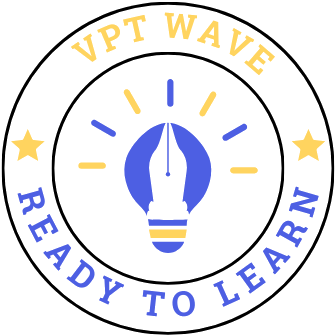Learning Management Systems (LMS) have revolutionized the way we approach education and training. In this article, we will explore the definition, features, benefits, and challenges associated with Learning Management Systems. Additionally, we will delve into the world of popular LMS platforms, considerations for choosing the right system, and the evolving landscape of LMS in both education and corporate training.
At its core, an LMS is a software application that facilitates the management, delivery, and tracking of educational content. It acts as a centralized hub for educators and trainers, providing a digital space for learners to access resources, complete assignments, and track their progress. Over the years, the concept of LMS has evolved from basic course management tools to sophisticated platforms that offer a wide array of features.
Key Features of LMS
User-friendly Interface
One of the primary attractions of a good LMS is its user-friendly interface. Intuitive navigation and well-designed layouts contribute to a positive user experience, making it easier for learners to engage with the platform.
Content Management
LMS enables seamless content management, allowing educators to upload, organize, and update learning materials. This feature streamlines the process of course creation and ensures that content remains relevant and up-to-date.
Assessment and Tracking Capabilities
Assessment tools within an LMS facilitate the creation and administration of quizzes, tests, and assignments. Moreover, robust tracking capabilities enable both learners and educators to monitor progress, identify areas of improvement, and personalize learning paths.
Benefits of Using an LMS
Increased Accessibility
LMS breaks down geographical barriers, providing learners with access to educational resources from anywhere in the world. This increased accessibility is particularly valuable in the era of remote learning.
Cost-effectiveness
Traditional learning methods often involve significant costs related to materials, travel, and facilities. LMS offers a cost-effective alternative by digitizing content and minimizing logistical expenses.
Enhanced Learning Experience
The interactive and dynamic nature of LMS enhances the overall learning experience. Features like multimedia content, discussion forums, and collaborative tools foster engagement and knowledge retention.
Popular LMS Platforms
Several LMS platforms have gained prominence in the educational and corporate sectors. Moodle, with its open-source nature, allows for customization and scalability. Blackboard offers a comprehensive suite of tools, while Canvas is known for its user-friendly interface and mobile compatibility.
How to Choose the Right LMS
Assessing Organizational Needs
Before selecting an LMS, it’s crucial to assess organizational needs. Consider the size of your user base, the type of content you’ll deliver, and the desired features for tracking and reporting.
Scalability and Flexibility
Choose an LMS that can scale with your organization’s growth. Scalability ensures that the system can accommodate an increasing number of users and content.
Integration Capabilities
An LMS that integrates seamlessly with other tools and systems (e.g., HR software, CRM) enhances overall efficiency and data management.
Implementation of LMS
Planning the Implementation Process
Successful implementation begins with careful planning. Define clear objectives, establish a timeline, and allocate resources to ensure a smooth transition.
Training and Onboarding Strategies
Effective training and onboarding are critical for user adoption. Develop comprehensive training materials and support systems to empower users with the skills needed to navigate the LMS.
Challenges in LMS Adoption

Resistance to Change
Resistance to adopting new technologies is a common challenge. Communicate the benefits of LMS clearly and involve key stakeholders in the decision-making process.
Technical Issues
Technical challenges may arise during implementation. Work closely with IT professionals to address and resolve any technical issues promptly.
Content Customization Challenges
Customizing content to suit diverse learning needs can be challenging. An effective LMS should provide tools for easy content customization without compromising quality.
LMS in Corporate Training
Customization for Corporate Needs
In the corporate sector, LMS plays a pivotal role in customizing training programs to meet specific organizational objectives and employee development goals.
Employee Engagement and Development
LMS fosters employee engagement through interactive modules, ongoing assessments, and opportunities for skill development, contributing to overall workforce development.
Future Trends in LMS
AI Integration
The integration of artificial intelligence in LMS is on the horizon. AI can personalize learning experiences, automate administrative tasks, and provide insights for continuous improvement.
Gamification
The use of gamification elements within LMS motivates learners through rewards, badges, and competition, making the learning process more enjoyable and engaging.
Mobile Learning
With the increasing use of mobile devices, LMS is evolving to offer a seamless mobile learning experience. This allows learners to access content on the go, enhancing flexibility.
Case Studies
Success Stories of Organizations Using LMS Effectively
Explore case studies of organizations that have successfully implemented LMS to improve training outcomes and organizational efficiency.
Lessons Learned from LMS Implementation Failures
Analyze instances where LMS implementation did not meet expectations, identifying key lessons for future adopters.
Measuring the Effectiveness of LMS

Key Performance Indicators
Define and track key performance indicators (KPIs) to assess the effectiveness of your LMS, such as completion rates, learner satisfaction, and skill development.
Feedback and Continuous Improvement
Encourage feedback from users and stakeholders to identify areas for improvement. A continuous improvement cycle ensures that the LMS remains aligned with organizational goals.
Security and Privacy Concerns
Ensuring Data Protection
Address security and privacy concerns by implementing robust data protection measures. This includes encryption, secure authentication, and compliance with data protection regulations.
Compliance with Regulations
Stay abreast of regulatory requirements related to data privacy and online learning. Ensure that your LMS complies with industry standards and legal frameworks.
LMS in Education
Impact on Traditional Education Systems
Examine how LMS is reshaping traditional education models, providing opportunities for remote learning, and fostering a more student-centric approach.
Remote Learning and Its Challenges
Explore the challenges and benefits associated with the widespread adoption of LMS in the context of remote learning, particularly in the wake of global events that necessitated a shift to online education.
User Experience and Interface Design
Importance of a User-friendly Design
Emphasize the significance of a user-friendly design in LMS. An intuitive interface enhances user experience and encourages active engagement with the platform.
Enhancing Engagement Through Interface
Discuss strategies for enhancing user engagement through thoughtful interface design, including multimedia elements, interactive features, and clear navigation.
Conclusion
In conclusion, Learning Management Systems have become indispensable tools in the education and corporate sectors. Their impact on accessibility, cost-effectiveness, and the overall learning experience cannot be overstated. As we look to the future, the integration of AI, gamification, and mobile learning will shape the next generation of LMS.
FAQs
- What is an LMS, and how does it differ from traditional teaching methods?
- An LMS is a software application that facilitates the management, delivery, and tracking of educational content. It differs from traditional teaching methods by providing a digital platform for remote learning, personalized assessments, and progress tracking.
- How can organizations overcome resistance to adopting LMS?
- Organizations can overcome resistance by clearly communicating the benefits of LMS, involving key stakeholders in the decision-making process, and providing comprehensive training and support.
- What are the key considerations when choosing an LMS for corporate training?
- Key considerations include assessing organizational needs, scalability, flexibility, and integration capabilities with other organizational tools and systems.
- How does AI integration benefit LMS users?
- AI integration in LMS personalizes learning experiences, automates administrative tasks, and provides insights for continuous improvement, enhancing the overall effectiveness of the system.
- What security measures should be in place when implementing an LMS?
- Security measures should include encryption, secure authentication, and compliance with data protection regulations to ensure the protection of user data and privacy.

